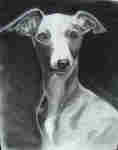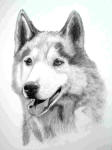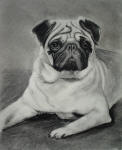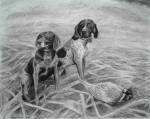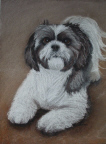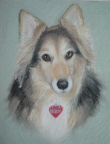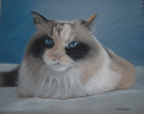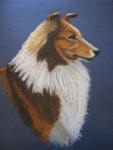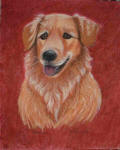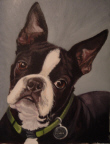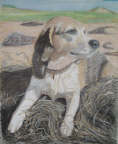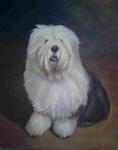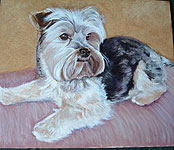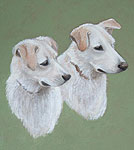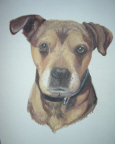How to Commission a Portrait:
Choose a favorite photograph(s) of your pet(s). Be sure that the image isn’t overexposed or too dark. It should represent the way you see your pet. If you have two photographs that, between them, make the perfect picture, that may work too. Unless specified, backgrounds will not be used. Humans welcome, too!
Think about which medium you'd prefer and how it will ultimately be framed (mat or no mat).
I'm happy to advise you about what would work best. Contact me below.
Pricing:
Portraits can be rendered in charcoal, pencil, watercolour pencil, soft pastel or acrylic in two sizes, on either
artist's paper, board or canvas.
Choosing the medium:
Each subject is unique. The colour & texture of your pet will be captured best by a particular medium.
If the scene is important, that should be included as part of the portrait.
| Charcoal |
> |
Short haired, black/white/grey |
| Pencil |
> |
Detailed but no colour |
| W/c pencil |
> |
Detailed & coloured, soft |
| Pastel |
> |
Soft coat or long haired |
| Acrylic |
> |
Photographic detail, depth of colour & best for portraits with realistic backgrounds. |
All media on paper should be framed with matting and glass. Acrylics on board or canvas are the exception.
The Process:
After receiving your photograph and discussing the size and medium, whether to include the background or substitute
another, and the date required, I'll begin the process of creating your portrait.
If it's a photographic print, I'll choose two mylar grids, one to overlay the original and one which is 2 to 3 times larger, depending on the desired finished size of the portrait. A sheet of tissue paper is laid over the larger grid and a detailed drawing of the original is made on the tissue. The grids allow me to reproduce exactly the proportions, expression and nuances of the subject. When the larger preliminary drawing is complete, charcoal or pastel is rubbed over the lines on the reverse side of the tissue, which is then laid onto the portrait paper or canvas. The lines are traced over with a pencil, transferring the charcoal and the drawing to the final support.
The portraiture now begins. Generally, the dark areas are blocked in first, whether in charcoal, acrylic or pastel, then lighter tones, shades and colours worked in. Layers of paint or pastel may be needed to give the final depth of colour and detail. In the case of pencil, special attention must be paid to the "values" or darkness of the tones in order to create a realistic and detailed drawing. In all media, I strive to match the colours and personality of the photographed subject.
When I think I've nearly finished the portrait, it and the photograph come downstairs from my studio, into the kitchen, where they can be viewed together, from a distance. Much squinting, staring and catching out of the corner of the eye goes on until I'm satisfied that it's right, or identify the parts that aren't. Back up to the studio for corrections, if needed, then, when the piece is complete, it may be sprayed with a fixative (pastels) or varnished with an acrylic spray (acrylic on canvas or board.
A tag is then created with the name of the subject, size and medium. My name and the photographer's name, if known, are included. Another tag contains my contact information. Both can be attached to the framing paper by the framer.
Some people like to refer to artwork as "sketches." A sketch can take 5 minutes. Hours and hours of work and a lot of thought goes in to each portrait, and it doesn't reach the client until I'm satisfied with it. Many of my clients or the recipients of the portraits burst into tears when they first see them. That's when I know I've done my job. |

